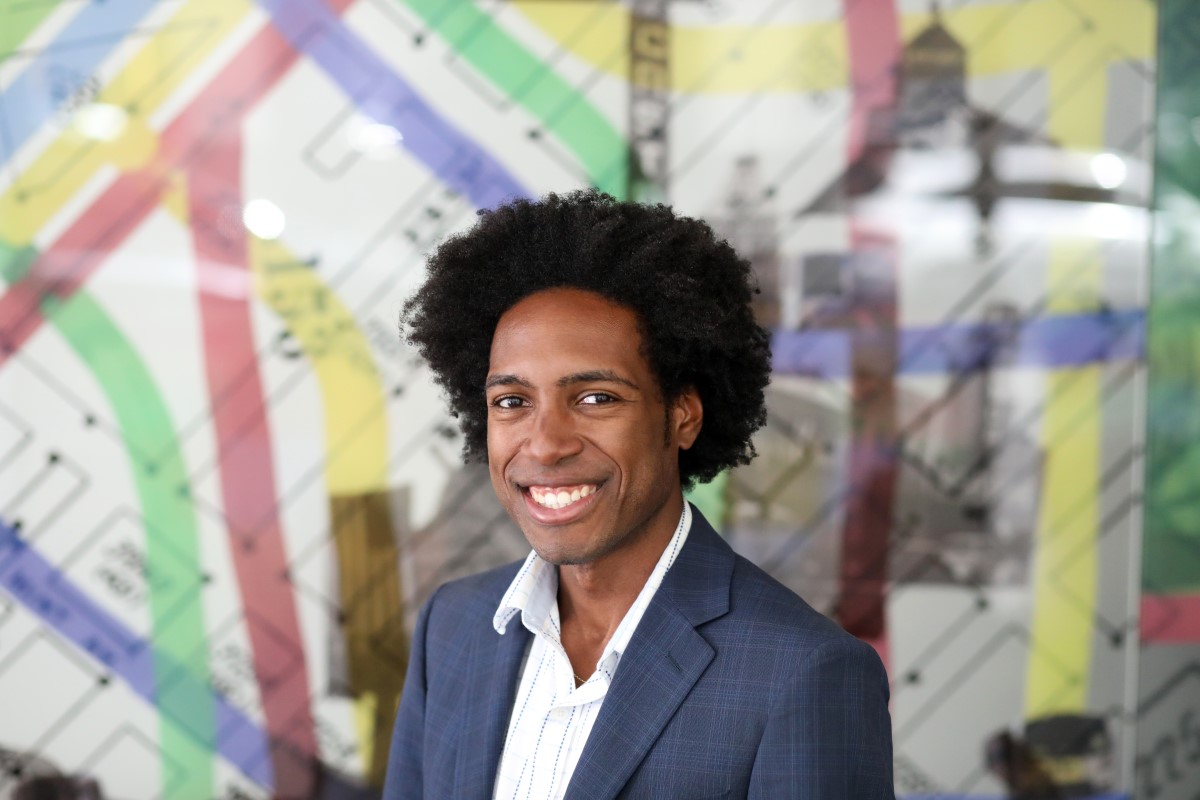10 Questions with Michael Cox, BART’s Sustainability Data Expert
 Michael Cox, a Principal Performance Analyst in BART’s Sustainability Department, grew up gardening with his mom and recycling with his dad in New York.
Michael Cox, a Principal Performance Analyst in BART’s Sustainability Department, grew up gardening with his mom and recycling with his dad in New York.
“My parents were farmers when they were kids, and they always taught me the importance of protecting the environment and being one with your surroundings,” Cox said recently during an interview at BART Headquarters.
When Cox was studying environmental science at Stanford University, he realized he was especially passionate about climate change. Fieldwork wasn’t for him – “I just wasn’t very good at it,” he said – so he decided to “attack the issue using a computer, with data.”
Read more about Cox’s unique role at BART and how he uses data to support the District’s sustainability efforts. And check out the 2022 Sustainability Report here, published today, which highlights BART's efforts to support and enhance sustainability within the BART system and region. Says General Manger Robet Powers: "BART is one of the greenest options for Bay Area residents traveling around the region."
1. How long have you worked for BART?
I have worked at BART for 3.5 years.
2. What’s your role at BART?
I am a Principal Performance Analyst in the Sustainability Department. I calculate our energy use, greenhouse gas emissions, water use, and waste generation, and I implement programs that can improve our performance in those areas.
3. If you can remember, what is your earliest memory of riding the trains?
My earliest memory of riding BART was during undergrad. I attended Stanford, and I needed to go to Berkeley to do some research at farmers markets. I took Caltrain to Millbrae and then BART to Berkeley. I remember being confused whether BART was an urban subway or commuter train, but now I know it’s kind of like both!
4. What’s something that might surprise us about your job?
I think a lot of times in the sustainability field, you get pushback from folks afraid of change and adjusting their behavior. We’re really lucky in California that people are already pretty aware of the challenges we face in terms of climate change and environmental pollution. It’s nice to have coworkers and members of the public that are really supportive of the work we do and excited by the progress we’re making.
5. Name your favorite BART station or route and tell us why you like it.
My favorite BART station is Lake Merritt. It was the station closest to me when I lived in Oakland, and I loved how convenient it was to get to downtown Oakland or the lake. There’s a lot of nice scenery in the area.
My favorite line is definitely the Oakland Airport Connector. It’s just nifty to ride on!
6. What do you typically do to pass the time on the train?
Usually, I play games on my phone. I’m playing Wordle or Spelling Bee from the New York Times, or I’m playing Fire Emblem Heroes, which is a strategy role-playing game.
7. What’s on your desk besides your computer?
On my desk at the office, I have a water bottle, lots of pens and pencils – even though I don’t write that much – and I have some art that my mom made. She’s a sculptor so I love having her pieces. I have some other gifts that I received from previous jobs: a framed photo of a Muni bus – I worked at SFMTA before BART – a model BART car, and a stress ball.
8. If you acquired a decommissioned legacy BART car, what would you transform it into?
If I had a bunch of them, I would make an escape room attraction where each BART car is a different task you have to complete.
9. Here’s your chance to brag. What’s something cool about BART you’d like to highlight?
One thing we’re always bragging about is how clean the electricity is that powers our system. In 2022, 100% of the electricity powering the core system came from greenhouse-gas free sources. BART is one of the best ways to reduce your greenhouse gas emissions associated with travel. We’re able to procure our own electricity, and that gives us the ability to negotiate our power purchase agreements to secure renewable and greenhouse gas-free energy.
10. What’s the most important lesson you’ve learned at BART?
You have to be patient. We work for a public agency and that means we have to get input from a lot of stakeholders before we make decisions, and that’s because we need to ensure we’re using our taxpayer funds appropriately. If you think something is going to take time, add a little more for a buffer and make sure you’re engaging with as many people as you can. It’s much easier to get buy in from different groups on things if they know what’s coming down the pipeline and feel included when decisions are made.